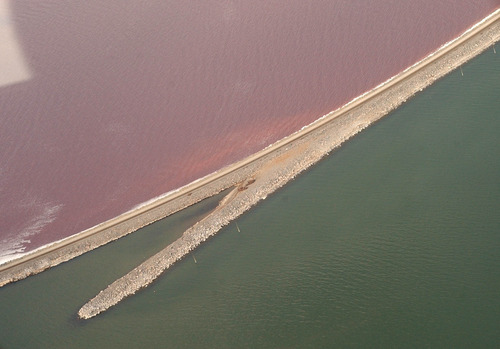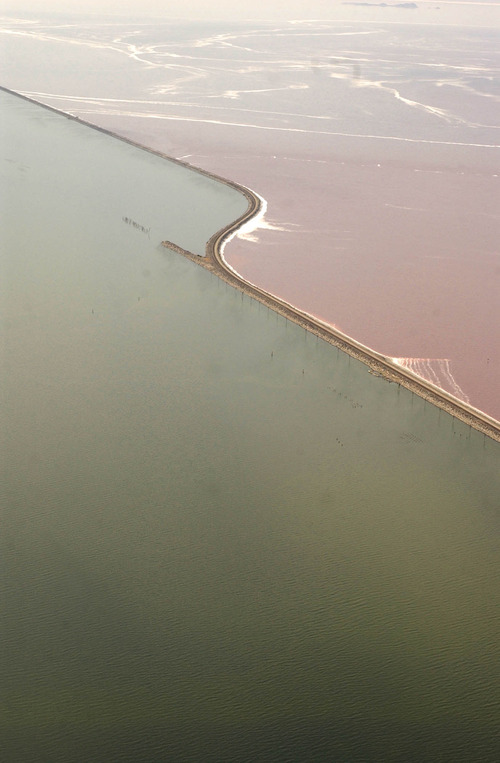This is an archived article that was published on sltrib.com in 2013, and information in the article may be outdated. It is provided only for personal research purposes and may not be reprinted.
Federal regulators are rethinking a decision to let Union Pacific Railroad build a bridge as part of a plan to shore up the Great Salt Lake causeway.
The U.S. Army Corps of Engineers, which oversees the project, has fielded concerns about the railroad's plan from industry, government agencies and environmental groups.
The fear? The new design might choke the flow of salty lake water, along with its economic and ecological benefits — values recently estimated at around $1.3 billion.
"It's quite apparent there are a lot of questions," said Lynn de Freitas, director of the Friends of Great Salt Lake, a conservation group that supports more in-depth review of the railroad's proposal. "There should be time to analyze the [railroad's] proposal ... because it's our lake" and an enormous public resource is at stake.
Indeed, many Utahns are determined to make sure the lake functions properly. Miners depend on it for the salty brine they collect and transform into important products, like magnesium and table salt.
The salt balance is also crucial for brine shrimp, which is harvested for fish food, and for migratory birds, hundreds of thousands of which visit the lake to rest, refuel and nest.
The discussion about the 20-mile, east-to-west causeway — an important shortcut for about 15 freight trains a day — has been under way for around two years.
Union Pacific requested the changes because the causeway was sinking and trains might soon wind up in the lake. It planned to replace two failing culverts with a 150-foot bridge to keep the salty water flowing, and it's already plugged the culvert nearest the western edge of the lake with 60 dumptruckfuls of concrete.
But, before the railroad and the Corps could agree on the rest of the work, fretful stakeholders began calling and writing in about the railroad's plan to put the bridge toward the western side of the causeway, where circulation might be limited on low-water years.
Jason Gipson, who's handling the project for the Corps, said he has heard from the U.S. Fish and Wildlife Service, the U.S. Environmental Protection Agency, Utah state regulators, US Magnesium, the Morton salt company, de Freitas' group and others about the lack of science-based information that would assure them the project won't cause significant problems.
The Corps has revoked its initial OK for Union Pacific's bridge plan. And now the agency is thinking about restarting the review process, this time requiring more data-gathering and stakeholder input.
"It's tough to pull together," said Gipson, emphasizing his agency's mandate to balance the various interests on a project of this size and scope. "It's such a complex lake."
The railroad company opted against weighing in on the recent developments.
Said company spokesman Aaron Hunt in an emailed statement: "Union Pacific is having an ongoing dialogue with the US Army Corps of Engineers about building a bridge to replace the existing culverts on the Causeway."
Twitter: @judyfutah.com







